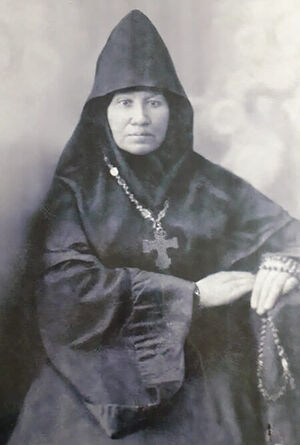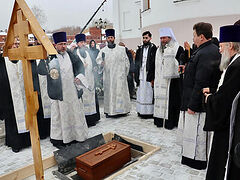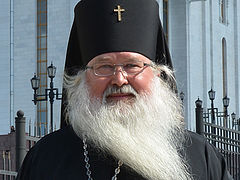Blagoveschensk, Amur Province, Russia, October 4, 2021
 Photo: blaginform.ru During the construction of the Church of the Albazino Icon of the Theotokos on the territory of the monastery of the same name in the far eastern city of Blagoveschensk, a crypt with the remains of the first abbess of the holy habitation was discovered.
Photo: blaginform.ru During the construction of the Church of the Albazino Icon of the Theotokos on the territory of the monastery of the same name in the far eastern city of Blagoveschensk, a crypt with the remains of the first abbess of the holy habitation was discovered.
According to the Blagoveschensk Diocese, a “well-preserved brick crypt was discovered” on Friday during the excavation of a trench for a drainage well.
“In the crypt there is a coffin with the remains of a woman in monastic attire. Based on a comparison of the contents of the grave with well-known historical sources, it was established that the remains belong to Abbess Palladia, the first abbess of the Theotokos-Albazino Monastery,” the diocese reports.
Prior to her arrival in Blagoveshchensk, Mother Palladia had been the head of the Exaltation of the Cross Community in the Ryazan diocese for 10 years. In 1909, the Holy Synod appointed her abbess of the newly-established Theotokos-Albazino Monastery in Blagoveschensk and was elevated to the rank of igumena. She arrived with 32 sisters in 1910, and through her labors, the new monastery took shape. Mother Palladia was in charge of the monastery from September 16, 1909-May 5, 1912.
On May 7, she was buried behind the altar of the monastery’s Holy Trinity Cathedral. The monastery was closed in 1920 and the buildings began to be used for various other purposes. The monastery was reopened in 2003.
A memorial panikhida was celebrated at the site of the newly-discovered remains of Mother Palladia, and a memorial cross will be installed in the near future.
Follow us on Facebook, Twitter, Vkontakte, Telegram, WhatsApp, MeWe, and Gab!



